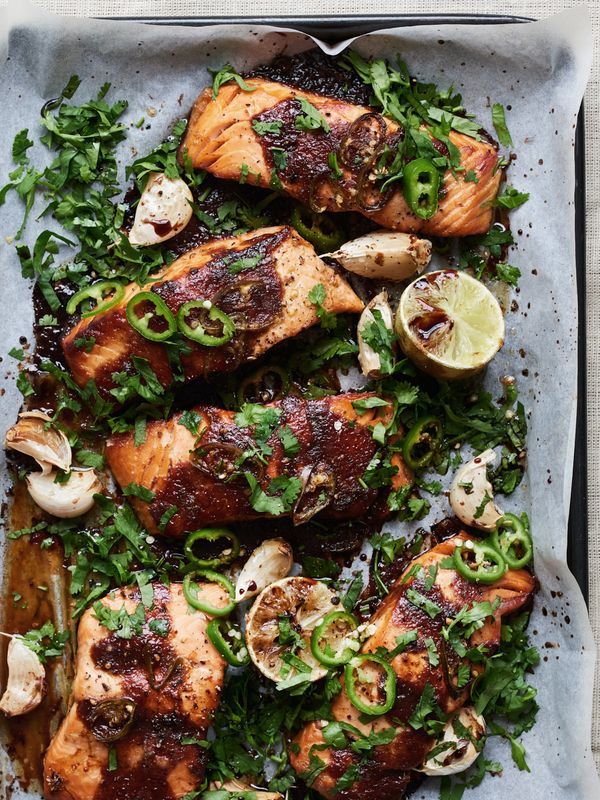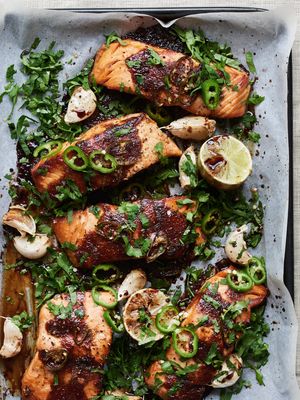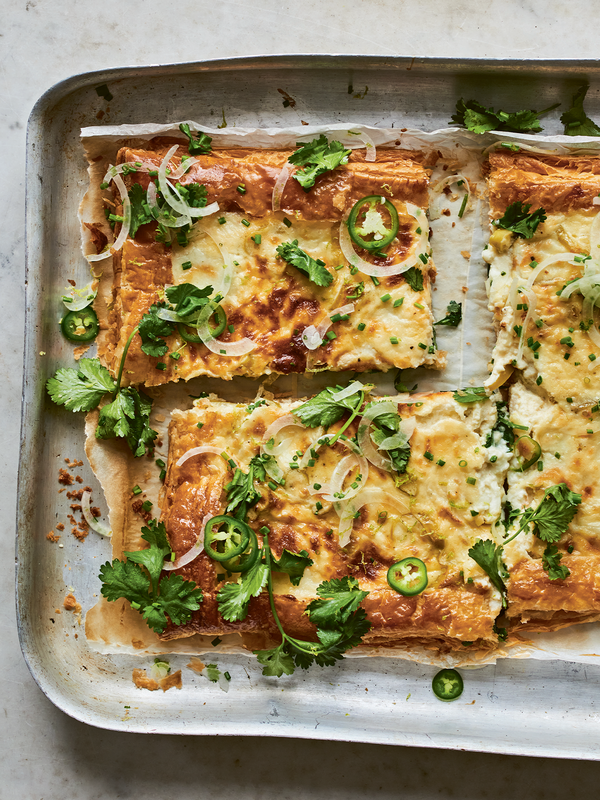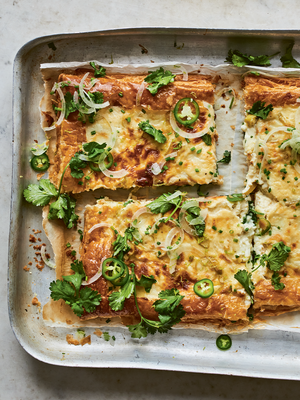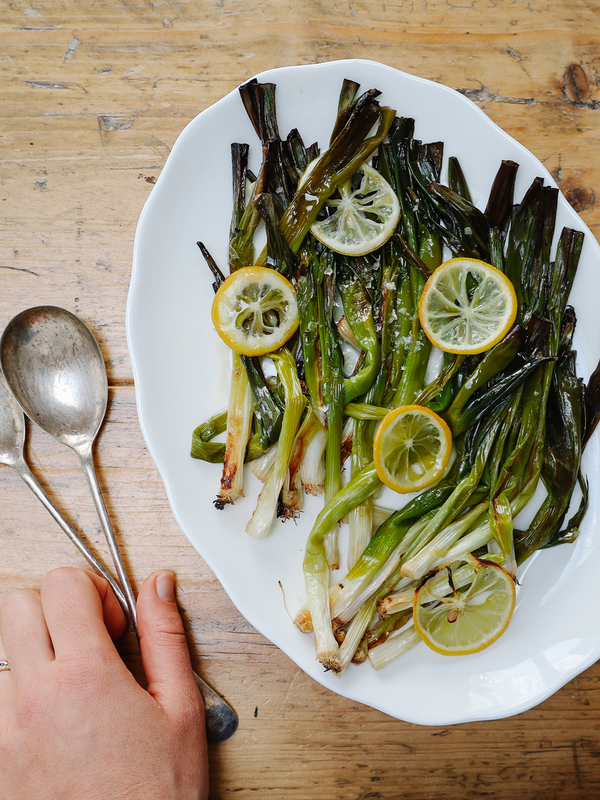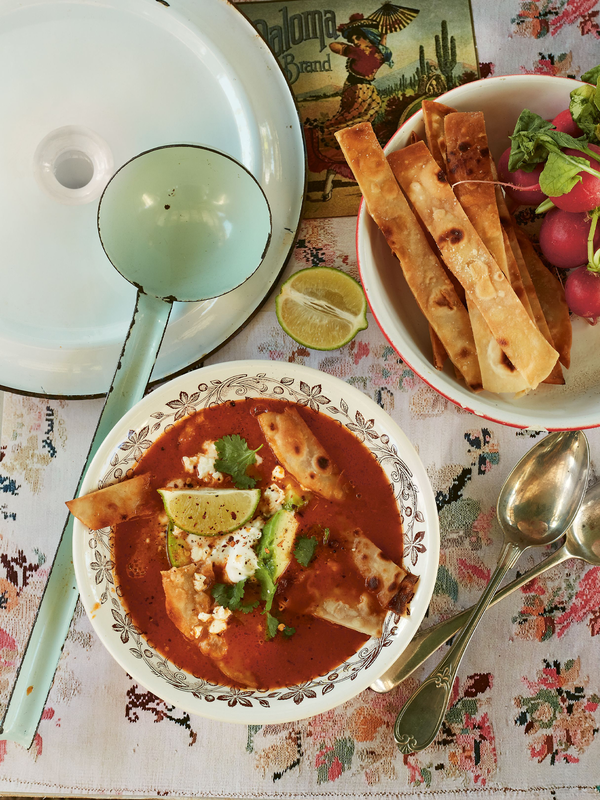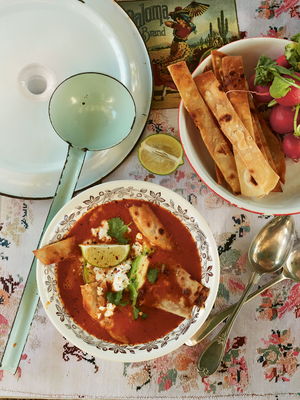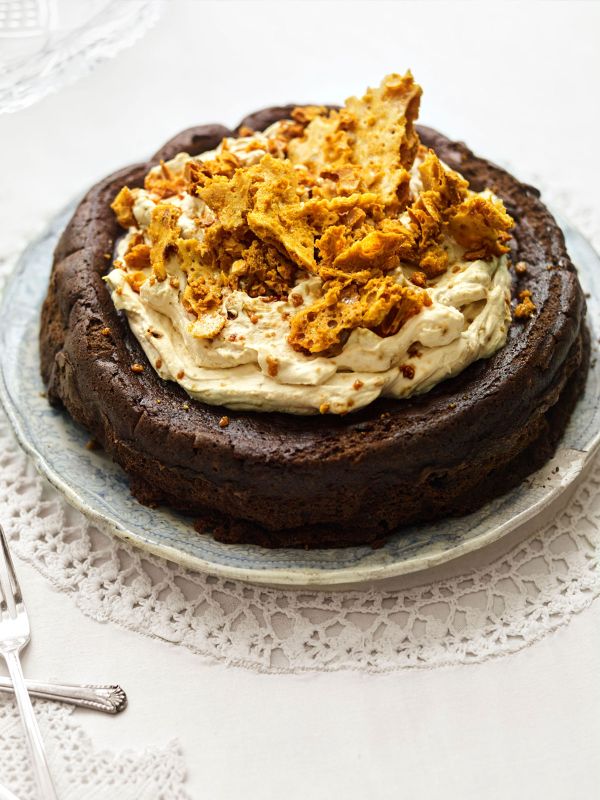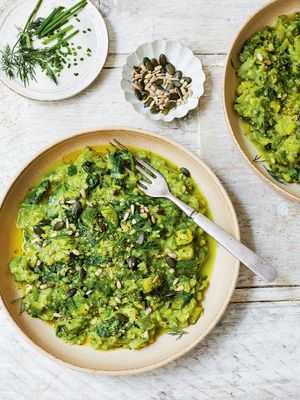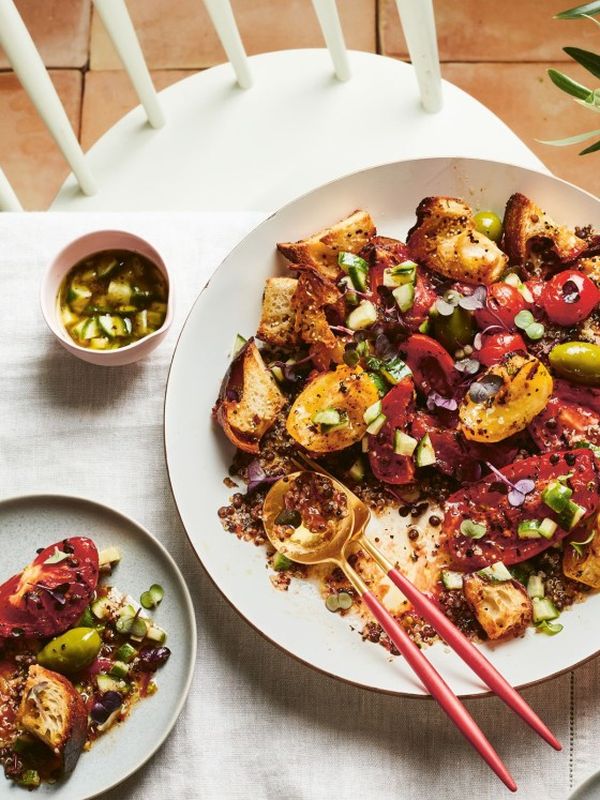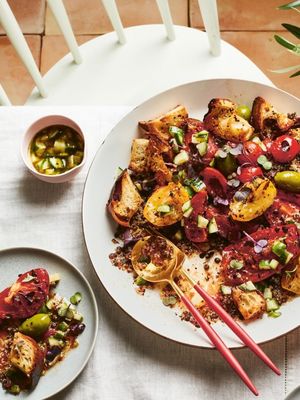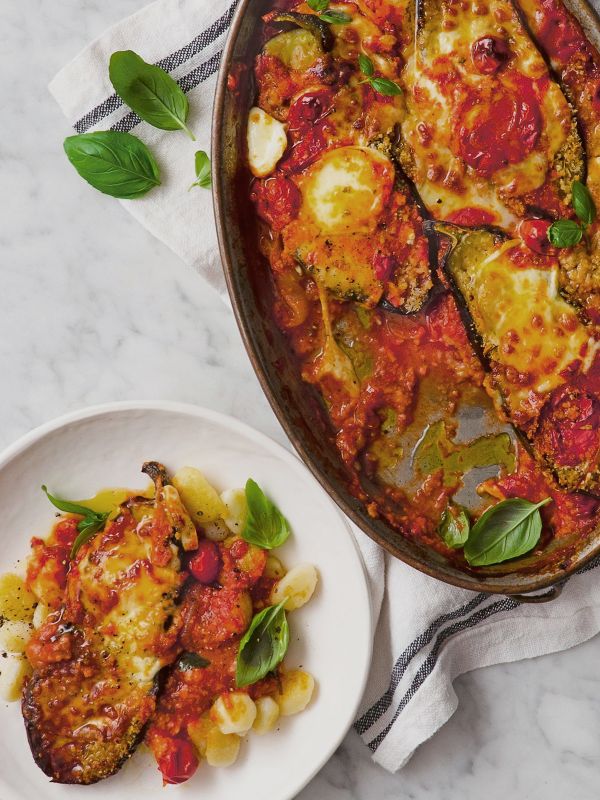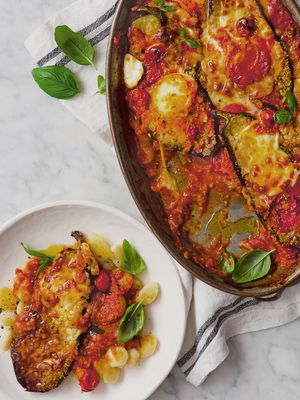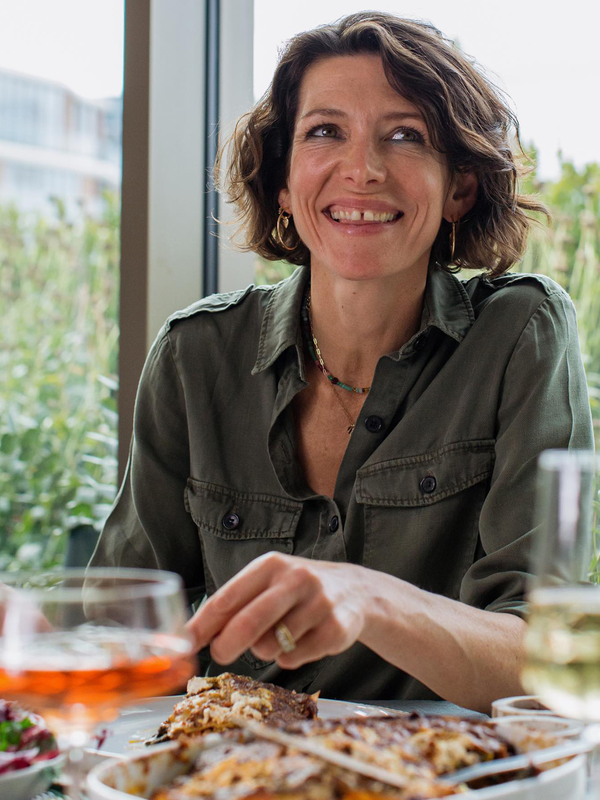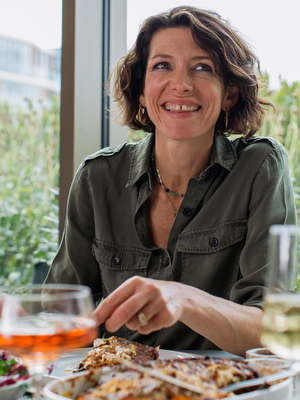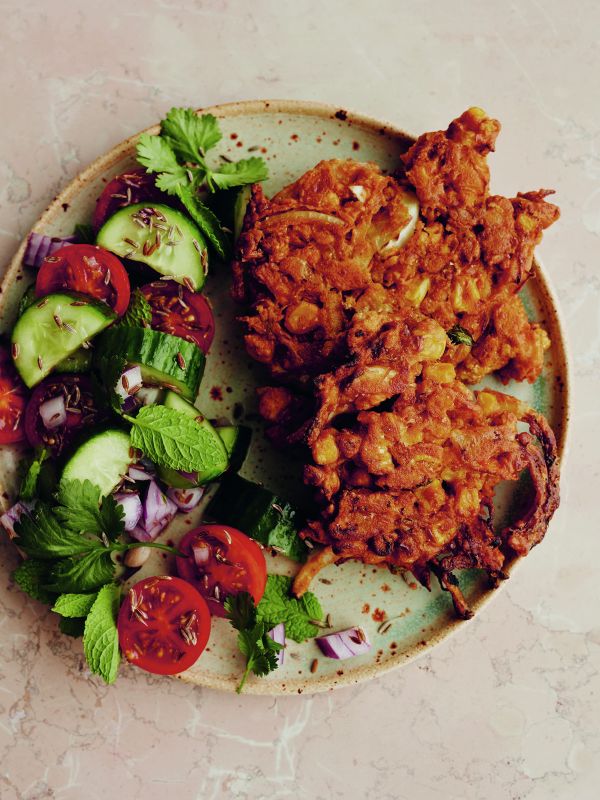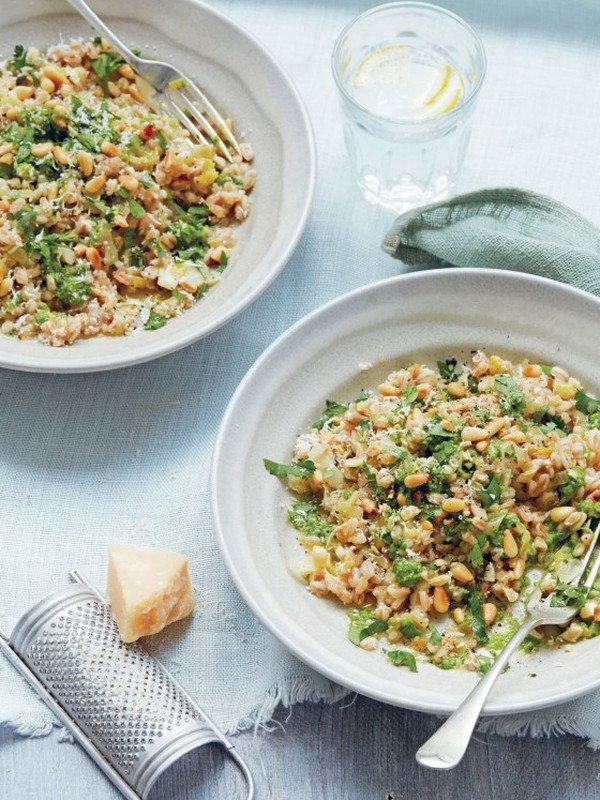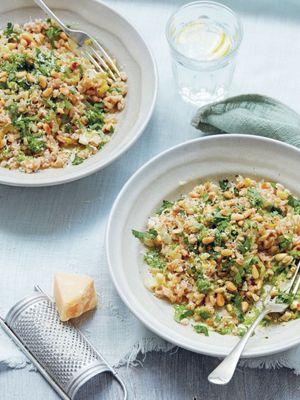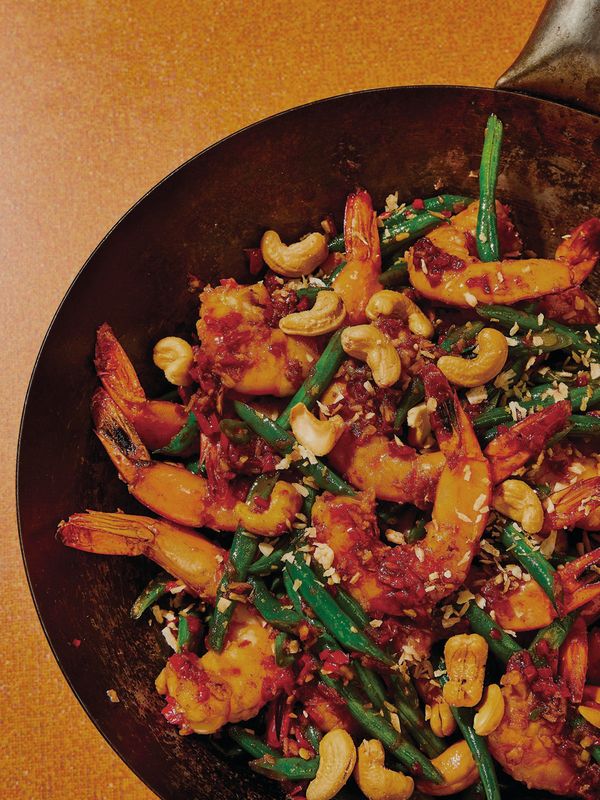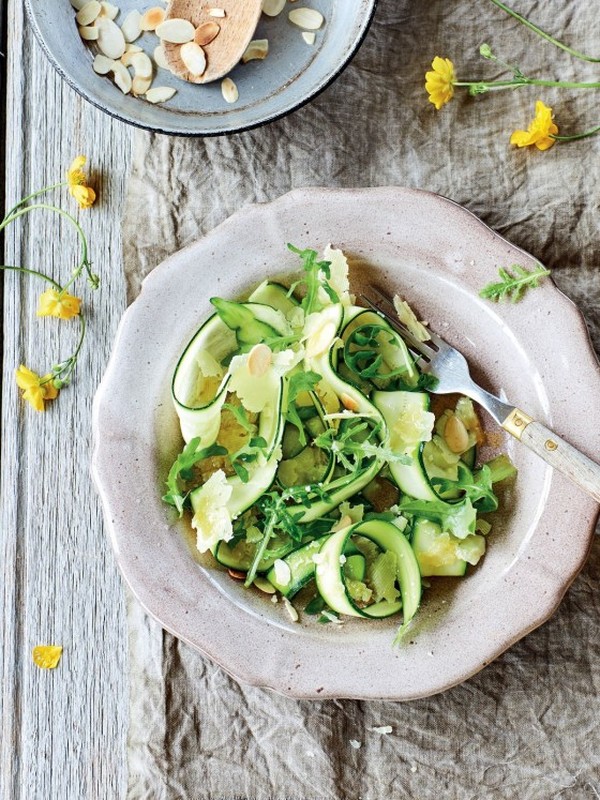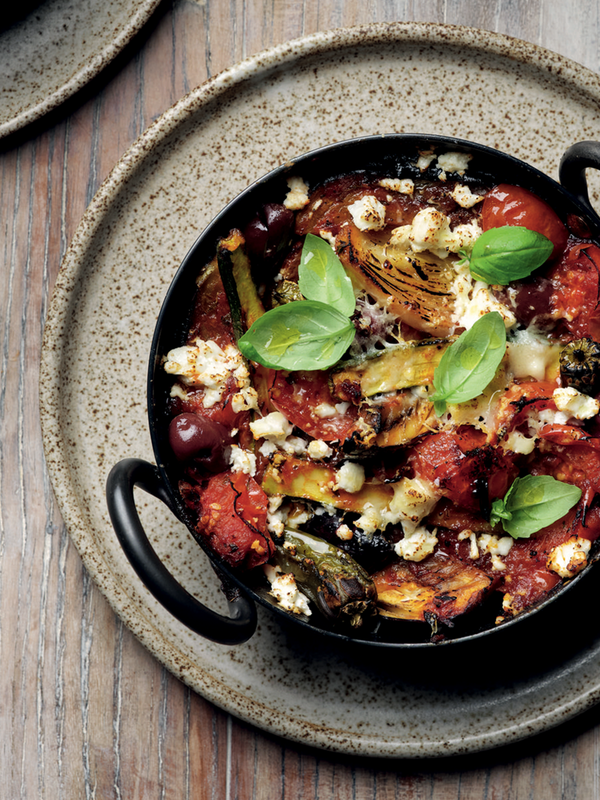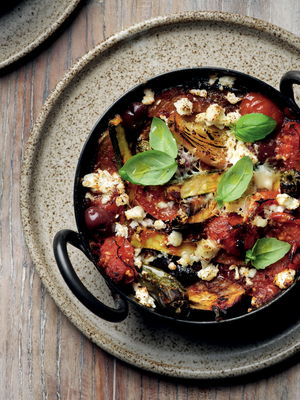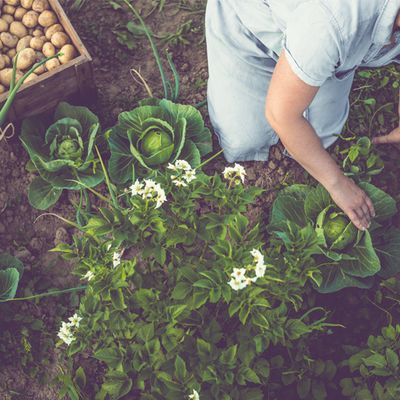
How To Grow A Vegetable Patch
Draw It Out
What your veggie patch looks like depends on the time and space you have available to you. Avoid getting too trowel-happy to start with and instead get down to designing your patch. “Think about the design of your vegetable patch – you can do this simply by drawing out a plan,” says Gena Lorraine, gardening and plants expert for Fantastic Services. “Some vegetables can be grown in a small area, whereas others need more space, so before you start, decide what type of veggies you want and how much space you have available.”
But if you’re new to gardening, how exactly should you design your patch? Mike Burks, Chairman of the Garden Centre Association and Managing Director of the Gardens Group, says to start small: “Begin with a plot of just a few square metres, allowing you scope but also not overloading you with too much work.” Then he suggests thinking about the placement of your plants, looking to avoid areas exposed to strong winds or patches that are heavily shaded by trees. “Plus, put plants you’ll need often closer to your home – so herbs and salads should be closer to your backdoor, so you can pop out and snip them with ease when you need them. Things like fruit trees require less attention and can go further back on your plot.”
Prep The Ground
Obviously, you can’t just plant vegetables into any old soil, so you’ll need to prep it first. “Get rid of all perennial weeds and loosen the soil,” Gena advises. “After that, add some organic material like compost to enrich the soil and provide it with the minerals and nutrients it needs.”
You can also go for raised beds, which are perfect if your veggies need a different kind of soil entirely. “They’re much simpler to maintain, with less digging required in the long-term,” Mike explains. “Don’t make them wider than 1.2 metres so you can reach the plants in the middle and leave space for paths wide enough for a wheelbarrow between them.”
Think Of The Sun
“Different vegetables need a different amount of sunlight,” Gena says. “This is why planning ahead matters a lot. Estimate which area of your garden gets full-day sunlight and which one is shady.”
So here are some plants that love good sunlight exposure daily:
- Cucumbers, tomatoes and peppers.
- Some veggies like a medium amount of sunlight, such as beans, peas and onions.
- Those that prefer shady areas are lettuce, spinach and Brussels sprouts.
Work Out What Goes With What
Before you start planting, make sure you’re familiar with the concept of ‘companion vegetables’, says Gena: “Some veggies can benefit a lot from each other when grouped and planted together.”
Richard Miers, gardening expert at The House & Garden Festival, says: “Companion planting is a fascinating subject – carrots grow well with leaks, onions and tomatoes; beans and other legumes add nitrogen to the soil and are good for potatoes and celery. But do make sure there is enough space between the different plants so one doesn’t take over and squeeze the other.”
Gena adds that companion planting is also great for avoiding pests: “Just by placing a strong-smelling species next to one that’s vulnerable to insects, you’ll likely avoid pests. For example:
- You can plant garlic and onions next to carrots to avoid carrot root fly, by hiding the smell of it.
- When it comes to tomatoes, basil is the other organic repellent that prevents whitefly.
- Cucumber’s ‘best friend’ is dill, due to its ability to repel cucumber-loving insects.
- Plant peas and beans next to shade-loving plants like spinach and lettuce.
- Also, keep in mind to plant together veggies with similar water and soil needs so that they thrive successfully.”
Go Easy To Guarantee Success
It’s oh-so exciting to get your vegetable patch up and running, but you want to guarantee success the first time round so your enthusiasm doesn’t run out of steam. “Just buy a bag of compost and sow radish, lettuce or any of the vast micro-greens – you’ll be eating something fresh within a month,” Tom Banks owner of Michelin-starred Yorkshire restaurant, The Black Swan.
Start At The Right Time
“The best time of the year to start with your garden is in spring,” advises Gena. “Mostly because seeds need sunlight and warm temperatures to grow well. A very good decision is to start planting seeds early in advance. Put them in small containers indoors, at least two months before planting outside.”
Plan For Pests
One important thing to look out for when taking care of the garden is plant-eating pests – they have the power to ruin all your veggies. There are, however, plenty of organic ways to prevent their invasion, according to Gena:
- Eggshells are snails and slugs’ greatest weakness. Just crush them up and sprinkle them on the top of the dirt.
- Flowers like lavender and chrysanthemums keep fleas away, as well as mosquitos and moths. The other way to benefit from these flowers without planting them is using essential oils made from them.
- If you don't want flowers beside your veggies, you can plant some garlic, onions, rosemary or dill, they also keep bugs away.
- Pepper and turmeric - mix a few tablespoons with soapy water (or only water) and spray your plants to get rid of spider mites and ants effectively.
Go For Flavour
If you’re confident in your veggie-growing abilities but space is limited, rather than going for the staple vegetables that are cheap to buy, focus instead on growing your own ‘flavours’, says Tom: “The first thing to plant is a herb bed close to kitchen door, with mint, thyme, sage, fennel, dill and lovage. These all grow again year after year. If you fancy a lemon, buy a ‘Four Seasons’ lemon tree. They are expensive but with flowers and fruit all year round, it's a worthwhile indulgence. If that sounds too much, then prepare for when a recipe calls for lemon by growing lemon thyme, lemon balm, lemon verbena and lemon gem marigold and lemon pelargonium flowers.”
Once You Get The Hang Of It...
Once you’re a veggie-growing aficionado, Tom suggests growing something that you just can’t buy in the supermarket – “It’s the super specialness of sweet corn that is lost within half an hour of picking; peas straight from the pod when they are only half grown, potatoes so ”new” that moisture beads on the surface as the skin rubs off with the soil, and, which when steamed and buttered you can suck against the roof of your mouth until they burst.”
At the other end of the scale, you could try planting a fruit bush, where you have to wait several years for a harvest. “The wonderful thing about perennial crops is that once established they produce year after year with little attention,” says Tom. “There’s nothing more satisfying than having a glut of apples and plums but take care to choose varieties that suit our climate. We grow apricots and lemons in North Yorkshire - it is quite easy to keep trees in pots and move them inside for winter. Even the smallest of gardens can find room for the dwarf fruit trees that can be so splendidly impressive in a line of pots on a patio.”
If You’re Short On Space
If you live in a flat, you can still try and grow yourself some veggies. Amy Maskell, who has over 4,000 followers on her Instagram account @amyskitchengarden, dedicated to her balcony garden, says there are definite ways to get around the lack of space with a balcony apartment: “Luckily, most vegetables can be grown well in pots – I’ve got a raspberry bush currently growing in a big pot! Seed brand Mr Fothergills has a range of seeds specifically developed to grow well in containers, which is called a ‘Contained Garden’. Plants that grow particularly well in pots include cherry tomatoes, lettuce, peas and broad beans. Potatoes also grow really well in containers; you can grow these in old compost bags effectively. Once you’ve mastered these, you can branch out into aubergines and squash too!'
When choosing your pots, Amy says to make sure they are at least 30cm wide and have good drainage (you can improve drainage by potting some gravel at the bottom of each pot). “I use old beer kegs from the local pub, I just cut them in half and add in lots of drainage holes – this stops them going to landfill.”
For balconies and roof terraces, start off with some small plants that you eat regularly. Herbs are a good starting point for this – try basil, mint, parsley and thyme to start off with. Then you need to start thinking about light: “While an allotment or a garden means you can choose the most suitable spot for each plant, growing on the balcony means you are more restricted in your conditions,” Amy explains. “This means you have to do a bit of research to see what is most likely to grow depending on the amount of sun you get. If you’re lucky enough to have a south-facing balcony, you can grow sun loving plants such as tomatoes, cucumbers and peppers. If your balcony only receives three to six hours of sun, try garlic, lettuce, bok choi and beets. As a general rule, vegetables that fruit from a blossom prefer plenty of sun throughout the day, root vegetables will grow in partially shaded areas, and leafy vegetables and salad greens are most tolerant of shade.”
And if you’ve only got a windowsill? No problem, says Amy. “A sunny windowsill can be the perfect spot to grow some small veg plants. Try a mix of your favourite herbs, lettuce and some mini tomatoes to create the perfect, practical window box.”
DISCLAIMER: We endeavour to always credit the correct original source of every image we use. If you think a credit may be incorrect, please contact us at info@sheerluxe.com.
